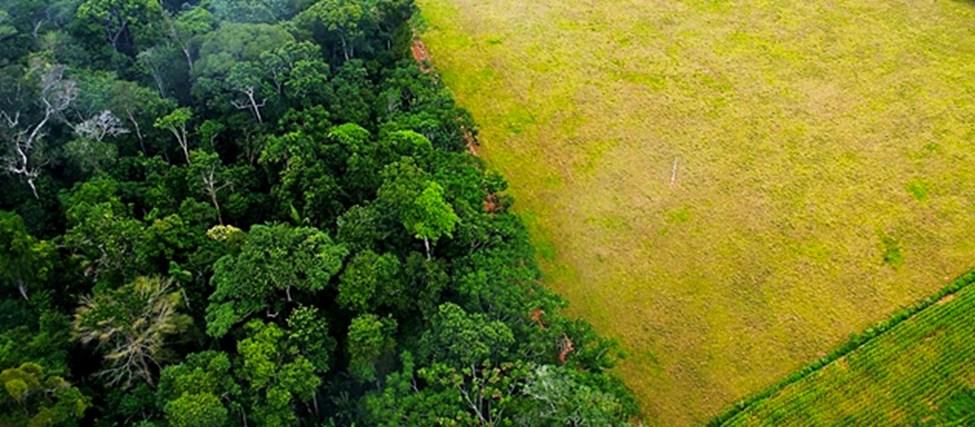
3 minute read
Amazonian Soy Moratorium
Brazil’s Soy Moratorium: A Successful Industry Led Effort to Reduce Deforestation
By: Holly Berman In response to rapid and widespread deforestation in the Amazon rainforest, Brazil’s soy industry implemented an agreement in 2006 called, the Soy Moratorium. The purpose of the Soy Moratorium is to promote industry wide sustainable farming, thereby halting deforestation in the Amazon region. The Moratorium was proposed after a great deal of pressure on the soy industry. Members of the agreement encouraged farmers to only plants in previously used lands by refusing to trade or finance farmers that were growing on newly-deforested land. Before the Moratorium, even with Brazil’s strict environmental regulations, deforestation was steadily increasing. In one study conducted by the European Commission found that between 2001 and 2004, about 2,000 square miles of forest in the region had been cleared for crop, but specifically soy, production. The Soy Moratorium serves as a great example of effective supply-chain governance, as opposed to a traditional top-down regulatory approach. In 2006, following a report published by Greenpeace, multi-national companies like McDonalds and Wal-Mart stopped purchasing soy grown on recently cleared Amazon land, pushed by consumer pressure. This, in turn, put pressure on commodity traders. Thus, the Soy Moratorium was born. In a study published in January of 2015, The University of Wisconsin-Madison’s Holly Gibbs, in conjunction with other colleagues across the United States and Brazil, concluded that the Moratorium did, in fact, helped to drastically decrease deforestation linked to soy production in the Amazon region. Gibbs, a professor of environmental studies and geography in the UW-Madison Nelson Institute's Center for Sustainability and the Global Environment (SAGE), commented, "What we found is that before the moratorium, 30 percent of soy expansion occurred through deforestation, and after the moratorium, almost none did; only about 1 percent of the new soy expansion came at the expense of forest”. As Science Daily explained, “By 2014, after eight years of the moratorium, almost no additional forest was cleared to grow new soy, even though soy production area had expanded another 1.3 million hectares. Farmers were planting on already cleared land”. Although Brazil is home to strict environmental and deforestation regulations, the study explained that these regulations were simply not enough, and that an industry-led approach, in addition to government regulations, is effective in managing land loss in Brazil. When the Moratorium was proposed, it was scheduled to end in 2014. As of January, the soy industry extended this date to May of 2016. With the success of the Soy Moratorium, other food production industries are beginning to follow in the soy industry’s footsteps. Recently, the cattle and palm oil industries in the area have also proposed similar industry-led deforestation agreements. Looking at the bigger picture, Brazil’s example can show that governmental environmental regulations are not always enough to create a large-scale change. In order to protect what is left of our forested land and natural resources, agriculture and food production systems must begin to initiate more and more industry-led, environmentally sustainable approaches. In addition, consumer attitudes towards the environment can push these industries in the right direction. When talking about individual action, Gibbs commented, “Our consumer choices matter. One of the things I’ve learned from working with all these companies is that they listen. They respond to... consumer pressure. I would really encourage Cardinal readers to learn about how much they matter globally, and about how decisions we make here can affect the Amazon River Basin and beyond”.
SOURCES:
http://host.madison.com/daily c a r d i n a l / s o y - m o r a t o r i u m -i shelping-protect-the-environment/ article_3b290018-b173-11e4-b69c0fbd84e28303.html
h t t p : / / w w w . sc i e n c e d a i l y.c o m/ r e l e a s es/2015/01/150123081325.htm
h t t p : / / w w w . s c i e n c e m a g . o r g / content/347/6220/377.summary










